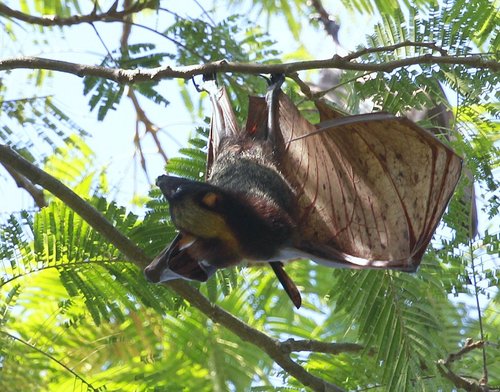
Golden-capped Fruit Bat
The golden-capped fruit bat, Acerodon jubatus, dazzles with its golden crown and vast wingspan. Roosting in lush Philippine forests, this giant flying fox is vital for seed dispersal and pollination, ensuring the health of its ecosystem. Its majestic flight at dusk is a captivating natural spectacle.
1.4061 kg
Weight
Height: 18 cm
Size
Black, Gold
Color
2 years
Age of Sexual Maturity
Endangered
Conservation Status
Decreasing
Population Trend
Characteristics
Acerodon jubatus, known as the golden-capped fruit bat, is a large flying fox species native to the Philippines. It features a distinctive golden crown of fur, with a wingspan reaching up to 1.7 meters. They roost in large colonies, primarily in forested areas, and play a crucial role in seed dispersal and pollination.
Distribution Range of the Golden-capped Fruit Bat
Acerodon jubatus, commonly known as the Golden-capped Fruit Bat or Giant Golden-crowned Flying Fox, is native to the Philippines. It is specifically found on the islands of Luzon, Leyte, Mindanao, and several smaller islands in the Philippine archipelago.
Golden-capped Fruit Bat's Habitat
Environmental Conditions
This species primarily inhabits tropical rainforest environments, typically at low to mid-elevations. These regions are characterized by high humidity, consistent warm temperatures, and dense forest canopies that offer ample roosting sites.
Ecological Niche
Acerodon jubatus occupies a niche as a frugivore, playing a crucial role in seed dispersal and forest regeneration. It feeds on a variety of fruit species, contributing to the maintenance of its tropical ecosystem. The bat often roosts in large colonies in the forest canopy, favoring undisturbed primary forests, but can also be found in secondary forests and agricultural areas, provided there is sufficient tree cover.
Copyright @ Nature Style Limited. All Rights Reserved.
 English
English